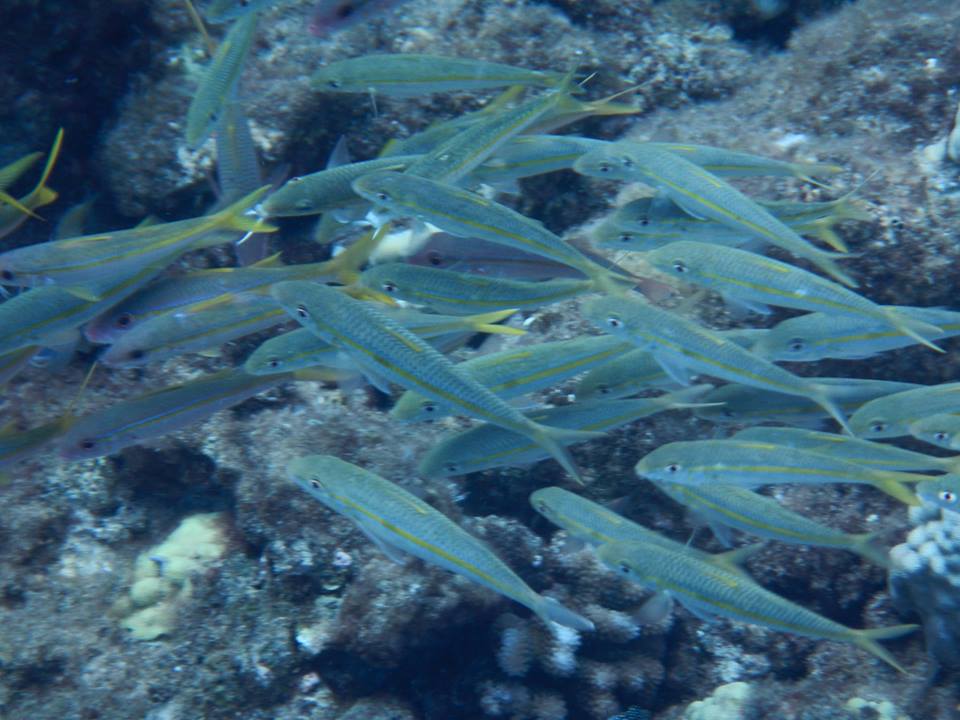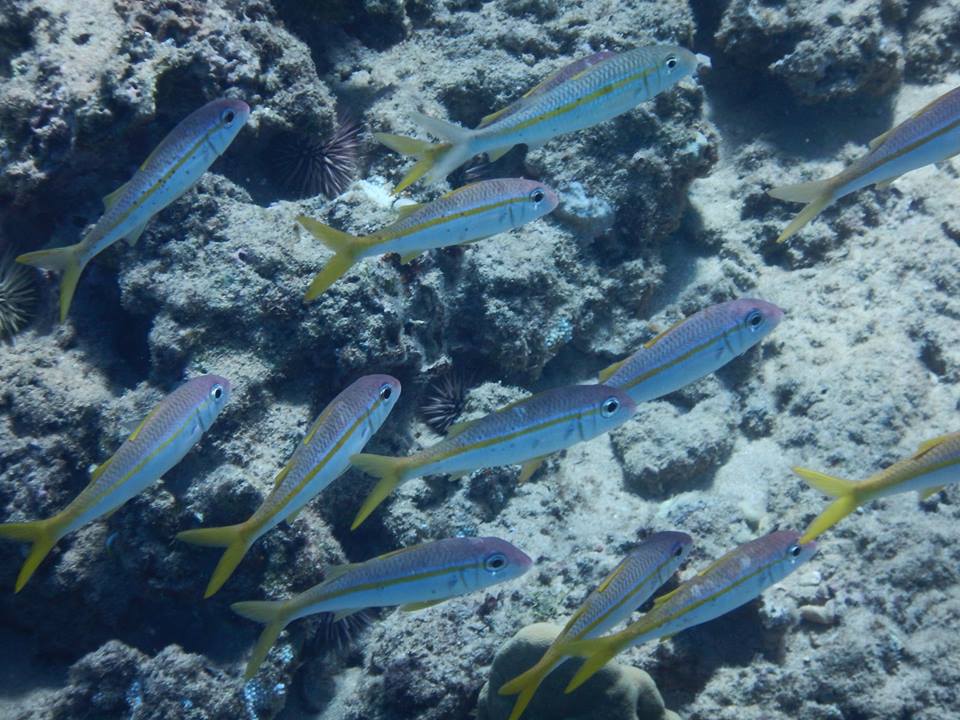Goatfish Are Stunning Swimmers
Those who are studying each different swim stroke style may want to look at the goatfish. This fascinating creature can give the perfect example of how fish swim and some of those movements can be incorporated into a person’s own swimming habits. Keep in mind that while there are several different types of goat-fish they will all swim in a relatively similar manner.
Goat-fish have two separated dorsal fins on a long body. Their chin contains a set of sensory barbells that are designed to help them to search out food along the bottom of the ocean. These barbells cause the fish to look similar to a goat, helping this incredible part of ocean life to get its name.
How Goatfish Swim
The fish swim by flexing their bodies, and thus their fish skin, and moving their tales from side to side. They can stretch and expand their muscles to help them better control speed, while the dorsal fins help to provide stabilization for them as they move forward through the water.

The goatfish also prefers to spend its time in schools of other fish. Those watching them can observe as the group swims together and will notice how similar they can be to some swim stroke types. While this is useful when they come in contact with predators, it also causes problems in reefs. The fish has been shown to aggressively eat invertebrates and this can cause them to breakdown a reef in the ocean. At night, the goatfish schools break up and many fish may either go on their own hiding among the bottom of the ocean, or they may stick with smaller groups of fish. When day returns, they will begin to school again.
Where Are They?
Most of this species are found in warm and tropical regions, such as Hawaii area, near ocean floor areas of mud and sand. Despite being found in salt water primarily, they have shown up in rivers and other fresh water environments at times. These fish lay their eggs and will usually leave them to hatch in the water. Commonly, they are bright shades of yellow and red, with some of the species having the ability to change their coloring in the water.

Most fish in this species are relatively small and many are considered to be a delicacy. This includes the red mullet, which has been highly sought after since the early days of the Romans. These fish will typically stay to calm waters that allow them to swim freely, but can survive in areas where the water may be rougher.
Goatfish will be some of the most common type of ocean life you will encounter while swimming through the warm waters of the open water ocean. When you encounter them, try to mirror your swim stroke to theirs and glide gracefully through the ocean water at a relaxing and effective pace.
Today’s Daily Swimming Workout
Warm-Up: 500 as continuous 25 kick balanced on your side and 25 swim
6 X 300 as 100 swim, 100 kick, 100 pull; full 300 stokes are 1) Butterfly, 2) Freestyle, 3) Backstroke, 4) Freestyle, 5) Breaststroke, 6) Freestyle
12 X 25 alternating by 25 butterfly and freestyle
6 X 150 with swim fins on, as alternating by 150 backstroke and freestyle
12 X 75 with hand paddles on, alternating by 75 breaststroke and freestyle
4 X 100 freestyle keeping and even pace with 15 seconds rest
Warm-down: 200 super-slow tai-chi style freestyle
Total: 5000 meters or yards
back to the top of goatfish page








